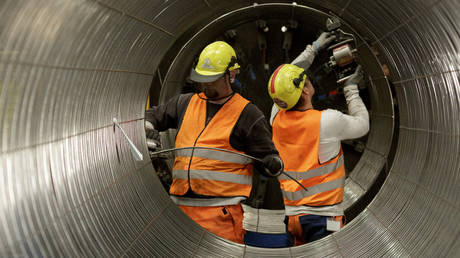
Incident is the second instance this month in which Baltic Sea cables or pipelines have been harmed
An undersea telecommunications cable connecting Sweden and Estonia in the Baltic Sea has been ‘damaged,’ the Scandinavian country’s Civil Defense Minister said at a news conference on Tuesday, in what is the second such occurrence in the region in the past month.
“We are currently unable to assess what has caused this damage,” government minister Carl-Oskar Bohlin told reporters in Gothenburg, adding that it is “not a total cable break but it is a partial damage to the cable” and that it remains operational. The Swedish minister said that the damage sustained to the cable was sustained outside of the country’s territorial waters and its exclusive economic zone.
The damage, Bohlin explained, appears to have occurred at around the same time as when the Balticconnector gas pipeline and a telecommunications cable between Estonia and Finland were damaged, on October 8. NATO, the US-led military bloc that Helsinki joined earlier this year, has vowed “a united and determined response” if an investigation determines that saboteurs were responsible.
Finland has said that it cannot rule out a “state actor” being behind the October 8 incident, and that it is reviewing vessel traffic in the area at the time of the suspected attack.
The Prime Minister of Sweden Ulf Kristersson warned last week of potential vulnerabilities to the “spaghetti of cables, wires, infrastructure on the seabed” that connects countries, transfers data and supplies energy in the region. “It is absolutely fundamental for data traffic, so the vulnerabilities today are much, much greater,” he said.
Adequately policing waters in the area is a “very intense” challenge, the head of Sweden’s navy, Rear Admiral Ewa Ann-Sofi Skoog Haslum said on Tuesday. “The challenge for us is to monitor this volume of water,” she said. “Everything that happens under the surface is deniable.”
Last September, the Nord Stream pipelines supplying oil and natural gas from Russia to Germany were ruptured, in incidents widely believed to have been sabotage. A culprit has yet to be identified.
Seymour Hersh, the Pulitzer-winning American journalist, published a report earlier this year in which he claimed, citing intelligence sources, that the United States executed a covert CIA operation to destroy the pipelines in collaboration with the Norwegian government. Washington has strongly denied the claims.
A competing theory, reported by Western outlets, has suggested that a team of Ukrainian commandos used a rented yacht to transport explosives to the blast sites, but that the CIA told the Ukrainians to abort the plan.




